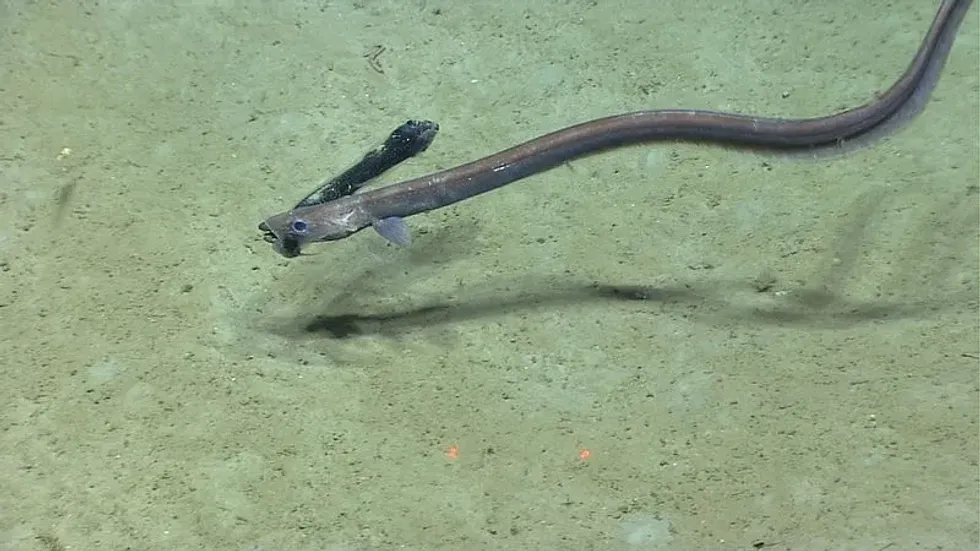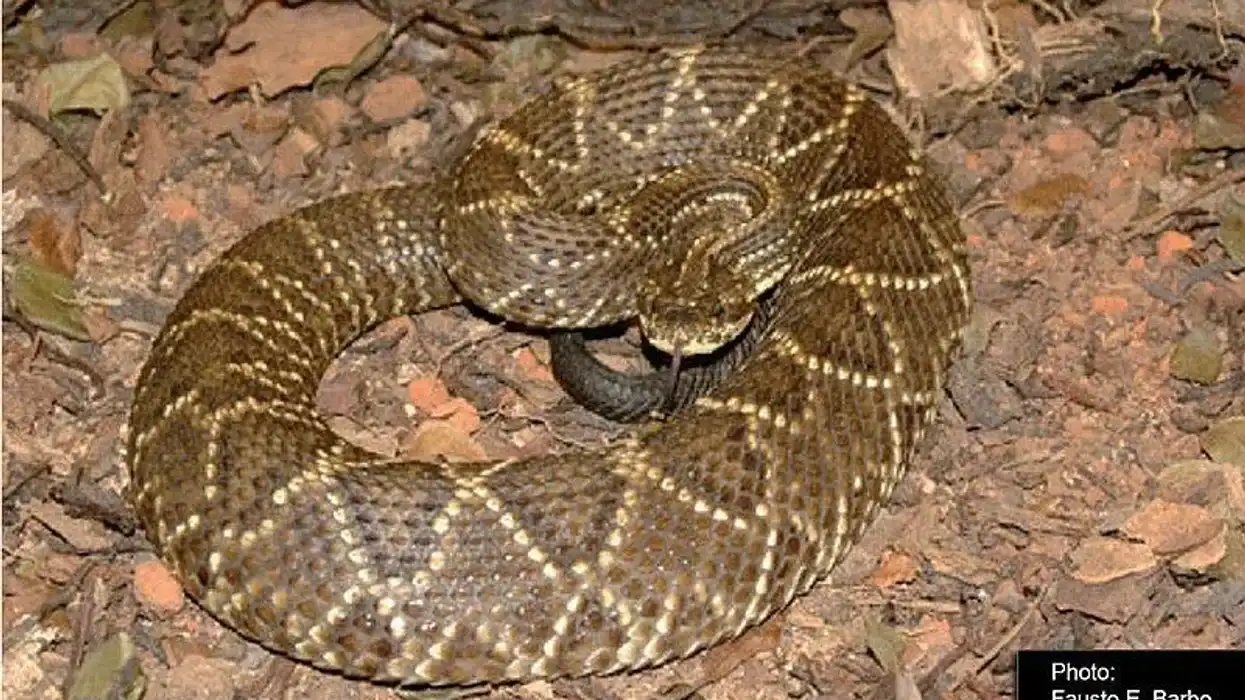There are more than 800 species of eel in the world and cutthroat eels are one of these species. Cutthroat eels are known by their scientific name Synaphobranchidae and are spotted in oceans and seas in tropical and temperate regions.
They are seen worldwide, especially in the deep sea. These eel Synaphobranchus are Not Evaluated by the IUCN (International Union For Conservation Of Nature).
The cutthroat eel (Synaphobranchus) belongs to the order Anguilliformes and suborder Synaphobranchodei. The cutthroat eel (Synaphobranchus) has the ability to live underwater and has an elongated body, unlike other fish species. They are popularly called slime eels.
These eels have no economic importance, however, they are an integral part of maintaining and completing the ecosystem and sustaining it. Cutthroat eels (Synaphobranchus) coexist with other fish species in the same range. Cutthroat eels are primarily distinguished from other species by their telescopic eyes when they are larvae.
For more relatable content, check out these fact files on ribbon eel and moray eel.
Cutthroat Eel Interesting Facts
What type of animal is a cutthroat eel?
The cutthroat eel is a type of eel that belongs to the kingdom Animalia, order Anguilliformes, and suborder Synaphobranchodei.
What class of animal does a cutthroat eel belong to?
The cutthroat eel is a type of eel which belongs to class Actinopterygii, family Synaphobranchidae, and genus Synaphobranchus.
How many cutthroat eels are there in the world?
Cutthroat eels live in the deep sea so they exact population is not known. Thus fish species has been classified as a Not Evaluated species by the IUCN Red List.
Where does a cutthroat eel live?
The cutthroat eel species lives in temperate to tropical seas. They are seen in all regions worldwide and are not endemic.
What is a cutthroat eel's habitat?
The cutthroat eel's habitat range is temperate to tropical seas. This species prefers living in deep waters and close to the sea bed. Did you know that the family Synaphobranchidae contains 10 genera and about 35 species? Genera is the plural of the biological classification genus.
Who do cutthroat eels live with?
Cutthroat eels live by themselves as solitary beings as well as with their own kind. This species stays close to the seafloor and seldom comes to the upper levels of the sea.
How long does a cutthroat eel live?
The exact lifespan of a cutthroat eel is not known because it lives at the bottom of the ocean. Throughout their life, they remain in the same habitat range and do not move to a different region. The oldest eel was 80 years old.
How do they reproduce?
Little information exists around their mating rituals. They mate through external fertilization in which clouds of free-floating eggs fertilize the sperm.
Cutthroat eels lifecycle contains seven stages beginning with eggs, leptocephalus, glass eel, lever, yellow eel, and finally an adult, after which they spawn to give birth to young ones. They lay 500,000-4,000,000 eggs. The parents are barely involved in raising the young and the young develop themselves.
What is their conservation status?
The cutthroat eel has a classified conservation status of Not Evaluated by the International Union For Conservation Of Nature.
Cutthroat Eel Fun Facts
What do cutthroat eels look like?
Cutthroat eels are similar to other eels with an elongated body, largemouth, and many teeth inside a compressed head. They have mucus covering their whole body and are called slime eels.
They are specifically recognized for their telescopic eyes as larvae. When they are born, they go through various life stages before finally becoming an adult. Males and females are similar in appearance and difficult to tell apart.
How cute are they?
Cutthroat eels are not a cute species, however, they are exotic fishes that reside in deep water. They do not come to the shallow range of the water so you can only see them if you go scuba diving or do other water sports to explore marine life underwater.
How do they communicate?
Eels communicate using low electric organ discharges. Cutthroat eels are ideally called cutthroat eels owing to their appearance which sets them apart from other eels. They are popularly called shortfin cutthroats.
How big is a cutthroat eel?
The cutthroat eel is 9.1- 63 in (23-160 cm) in length which is five times bigger than the kuhli loach. A kuhli loach is a freshwater eel that grows a maximum of 4 in (10.2 cm).
How fast can a cutthroat eel swim?
Eels don't have a streamlined body like other fishes, however, they are capable of using their elongated bodies. They move in a rolling wave propelling them to move forward. Some species of eels can move at great speeds, often overpowering fishes in the sea.
How much does a cutthroat eel weigh?
The cutthroat eel's exact weight is not know. They have elongated bodies in length and reside at a great depth close to the seafloor. The longest eel is the slender giant morray in terms of their body length.
What are the male and female names of the species?
Male and female eels are hard to tell apart since they both have an elongated body in length. They differ in reproductive functions and are barely involved in raising their young.
What would you call a baby cutthroat eel?
A baby cutthroat eel is called a lever and they are relatively shorter in length. The female adult lays its eggs close to the seafloor at a depth to keep them away from possible predators.
What do they eat?
These fishes are primarily carnivores. These fishes reside in the deep ocean and they search for food mostly on the bottom levels of the sea.
They feed on dead fish or insects like dragonflies, mayflies, and midges. They don't find food easily and need to search to a great extent however, they have keen eyesight and sustain themselves. Dead fish are a staple in their diet summer when there are low concentrations of oxygen in the water body.
Are they dangerous?
When a cutthroat eel gets too close to the seafloor where this a high salinity level, it goes into a toxic shock which is dangerous for its own health. Few make it alive from this stage. Cutthroat eel toxic shock is harmful, however, it is only harmful to the eel itself. Eels are best observed from a distance.
Would they make a good pet?
These fishes are wild marine species and not ideal for adoption. Adopting these wild fishes is not legal, and it is best to observe such fishes in their natural habitat mostly in an aquarium or a community tank where they are specifically kept. Finding cutthroat eel fishes is not a guarantee however, you might find other eel fishes.
Did you know...
The electric eel releases electric charges of up to 650 volts. This is more than five times the standard United States wall socket.
The abyssal cutthroat eel was described by Toshiji, Kamohara, in 1938.
In the 1998 Hollywood movie 'Rush Hour,' Detective Carter, played by Chris Tucker, finds he is eating an eel. Eel has made appearances in various movies and other media representations.
European eels are one of the rarest eels found as they are labelled Critically Endangered by IUCN.
How many eggs do cutthroat eels lay?
Cutthroat fishes lay 500,000-4,000,000 eggs. Little information is known about this fish's breeding cycle.
They evolve through a process of various stages into an adult similar to how a frog develops through a stage of metamorphosis. They search for an appropriate site to lay their young to protect them from predators however, they are barely involved in raising the young.
Are eels high in mercury?
Freshwater eels and marine eels are often consumed as food in Japanese cuisines. In Europe and the United States, the European eel is consumed.
They have relatively low levels of mercury, making them safe to consume. There is no information if sea eels are consumed but in most instances they are not. Eels need to be cooked well before they are consumed as their blood is often considered to be poisonous.
Here at Kidadl, we have carefully created lots of interesting family-friendly animal facts for everyone to discover! Learn more about some other fish from our giant grouper facts and French angelfish facts pages.
You can even occupy yourself at home by coloring in one of our free printable cutthroat eel coloring pages.









